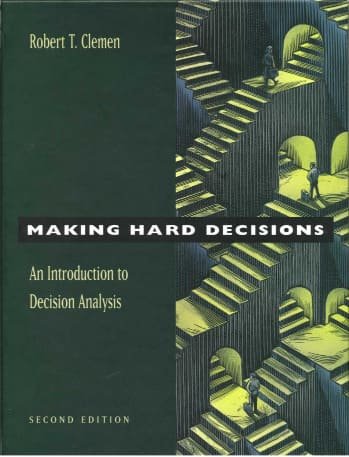Description
What makes decisions hard? Certainly different problems may involve different and
often special difficulties. For example, the ODA’s problem requires it to think about
the interests of various groups as well as to consider only limited information on the
possible effects of the sprays. Although every decision may have its own special
problems, there are four basic sources of difficulty. A decision-analysis approach can
help a decision maker with all four.
First, a decision can be hard simply because of its complexity. In the case of the
gypsy moths, the ODA must consider many different individual issues: the uncer-
tainty surrounding the different sprays, the values held by different community
groups, the different possible courses of action, the economic impact of any pest-
control program, and so on. Simply keeping all of the issues in mind at one time is
nearly impossible. Decision analysis provides effective methods for organizing a
complex problem into a structure that can be analyzed. In particular, elements of a de-
cision’s structure include the possible courses of action, the possible outcomes that
could result, the likelihood of those outcomes, and eventual consequences (e.g., costs
and benefits) to be derived from the different outcomes. Structuring tools that we will
consider include decision trees and influence diagrams as well as procedures for ana-
lyzing these structures to find solutions and for answering “what if” questions.
Second, a decision can be difficult because of the inherent uncertainty in the situa-
tion. In the gypsy moth case, the major uncertainties are the effectiveness of the differ-
ent sprays in reducing the moth population and their potential for detrimental ecologi-
cal and health effects. In some decisions the main issue is uncertainty. For example,






Reviews
There are no reviews yet.